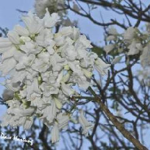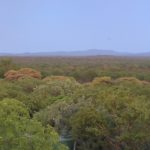TREE LIFE
DECEMBER 2021
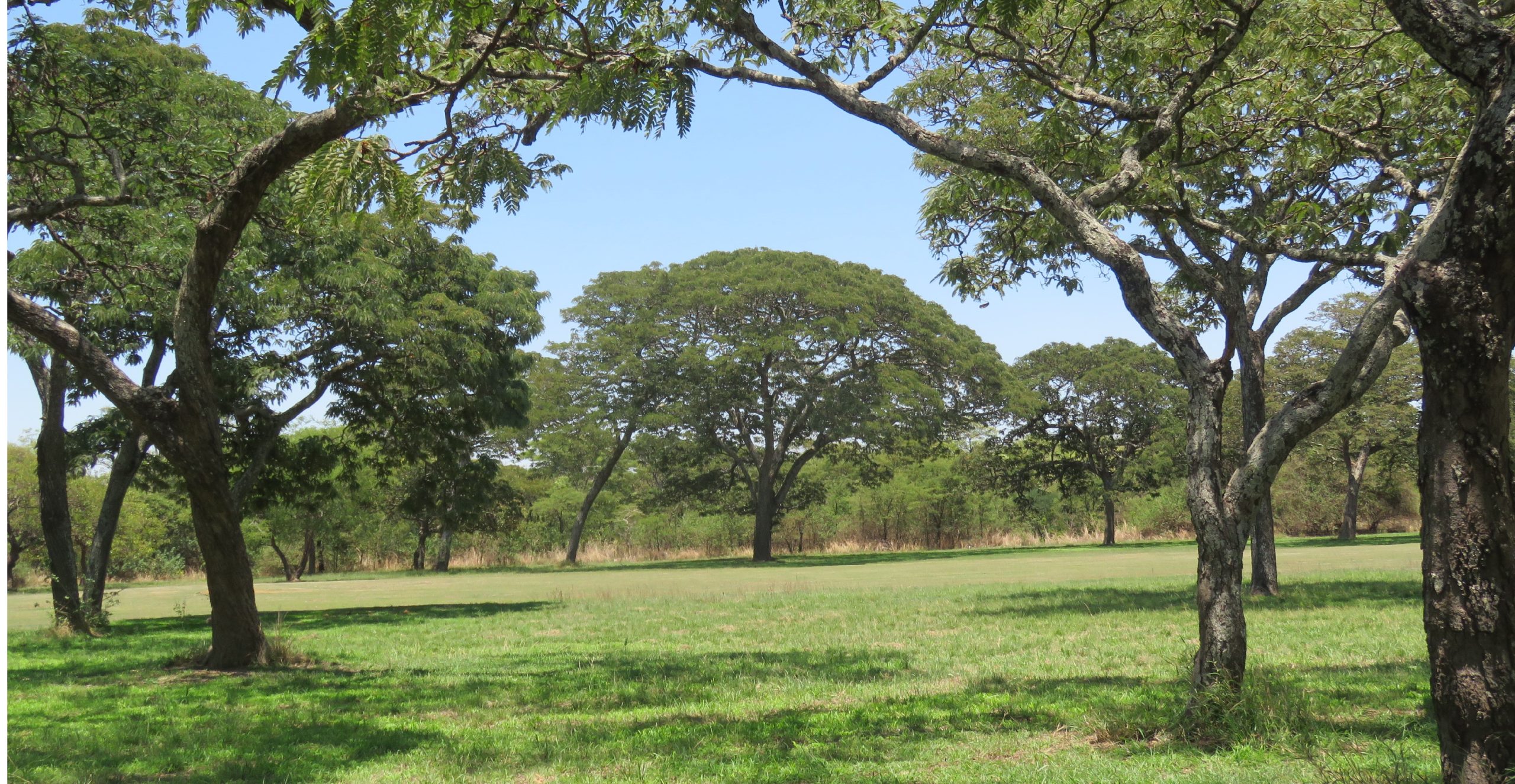
Norton Country Club golf course Photo by Rob Jarvis
Hi Everyone,
I am afraid it looks like one of those seasons again. Just when we were getting some good rain in November and we all thought the rains had taken off, bang we were brought crashing back down to earth again and hot totally dry weather has been with us since the beginning of December. Unfortunately the National Tree Planting day coincided with this dry spell and so unless the good-hearted folk who took the trouble to plant trees follow up on their endeavours, many freshly-planted saplings will be doomed before they start.
There are no outings planned at this stage for December, other than already held Botanical Gardens visit on the first Saturday of December. Even our traditional get-together before Christmas, luckily has been postponed because the recent spike in Covid cases countrywide is seeing carnage in the meetings, parties, family visits and general Festive Season activities. And by now I am sure you all know someone who is currently suffering from Covid Omicron variant. Anyway next week will be better and we are promised rain from Tuesday right through to the following weekend. Let’s see.
The picture above is from the Norton Country Club golf course out on the Bulawayo road just beyond the tollgate about 50 kilometres from town. The local residents are trying to boost their club and as it is one of the few country golf courses still operating in Zimbabwe it really stands out, after you have travelled along the major double-lane highway from Harare and see the huge urban sprawl spreading like a cancer, Norton CC with its magnificent mainly Brachystegia boehmii, definitely locally dominant, is an absolute pleasure to stroll around. They are known as mufuti or Prince of Wales Feathers and make outstanding trees either left alone where they occur or planted as they are somewhat easier to establish than musasas and grow quite rapidly to a good size. Enjoy your holidays!
Cheers Mafungi
Christmas Party
The Committee decided to not hold a Christmas Party this year and to postpone that gathering to the occasion of the AGM which is usually in May each year. As it turned out Covid would have made it impossible anyway. Enjoy the break!
Tree of the Month by Rob Jarvis
Sterculia quinqueloba
Large-leaved star chestnut
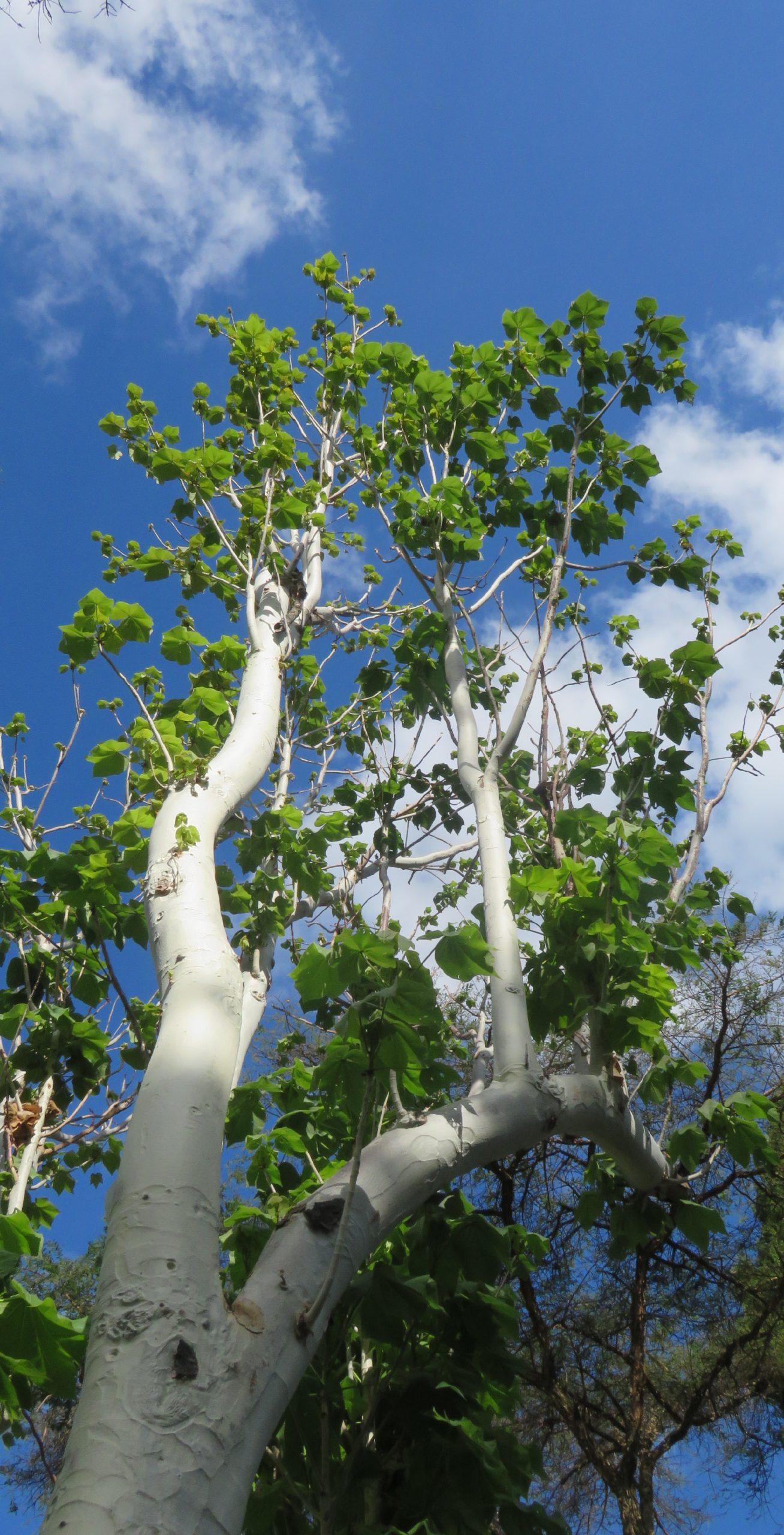
Sterculia quinqueloba Photo by Rob Jarvis
This particular specimen was seen on the Tree Society visit to the home of Jeanette Micklem and Keith Nicholson in Borrowdale area Saturday 27th November 2021.
Reaching for the stars, that is how one would describe the beautiful collection of trees planted by the Micklem family over many decades in their large expansive garden. On the day of our visit there had recently been rain and in the true forested area the ground was perfectly spongy underfoot. Just like one would find in an indigenous forest in the Bvumba or Chimanimani Mountains.
Many of our old favourites were there including this stunning specimen of Sterculia quinqueloba growing close to the parking area around the front of the house. How I wish, in my own little patches of Harare, that I had planted these trees even earlier than I did.
The large-leaved star-chestnut as it is commonly called makes a striking architectural tree whether growing in habitat out there in the wilds of Africa or if it has been strategically placed in an urban garden. You have to choose the planting site very carefully because they really do need full sun. Any hint of shade and they grow very tall and laxly, reaching for the sun and with huge leaves and a fairly soft fibrous woody stem especially when young, they can bend and then easily break at the slightest wind.
However these trees do their very best in habitat, on kopjes and on rocky mountain slopes where their spectacular fall or autumn colours see the leaves go yellow, then gold before floating to the ground. They may remain on the ground around the parent tree for some time in a dense mat. As the leaves fall, the trunk and branches of the tree are exposed to the full sun and the appearance is of bleached tree skeletons that stand out starkly on the hillsides in the north and north-east of Zimbabwe.
With the craze on waterwise gardening taking hold in Zimbabwe, there is no finer indigenous tree to include in a purpose-built rockery, than a Sterculia. They green up quickly as the rains approach and in winter they let the full energy of the sun reach down to all the hardy plants that thrive in the same sort of environment. So good companions include aloes, euphorbias, sanseverias and all the stapeliads. And if you have the space and are in a warm enough environment they will complement a baobab perfectly because of the similar trunk and branch colouring and their deciduous nature.
One word of warning, the Sterculias have irritating hairs protecting the seed in the pods so harvest with care and be sure to wash off the hairs before handling them to plant.
They of course are in the family STERCULEACEAE (coca and cola families). The specific name alludes to the distinct five-lobed leaves held simply at the end of a long petiole. The pods are also five-follicles. In Zimbabwe there are a number of other sterculias and each in their own way they make spectacular sights in the veld. A little-known one is Sterculia appendiculata which only occurs in the low-lying country in the far north-east of Zimbabwe, but they have very striking tall straight yellow-green boles which may rise up 30 to 40 metres before branching. Dramatic in habitat but difficult to establish out of their adapted environment. It is a very common tree in the low-lying alluviums along the Zambezi and its tributaries in Mozambique.
Sterculias are generally left by local people in their fields, not because they have any nutritional or medicinal purpose but rather because there is a belief that they protect from lightning. Long may this belief persist.
At Home in a Forest by Rob Jarvis
Tree Society visit to Jeanette and Keith’s wonderful home in Borrowdale
Saturday 26 November 2021
The Micklem house and garden was enchanting to stroll around and literally several generations of planting trees in a surprisingly flat, but large garden in Harare’s northern suburb of Borrowdale. Rich red soils, largely left to look after themselves with the planted trees feeding fallen leaves, twigs and branches down into the forest floor. Making a beautifully spongy topsoil layer, rich in micro-flora and –fauna truly a healthy biome by every definition. However now the earliest planted trees have largely grown to their full expected size and the vegetable patch underfoot is struggling to get enough sunlight, decisions will probably have to be made as to which trees to allow to stay to full term and which to terminate.
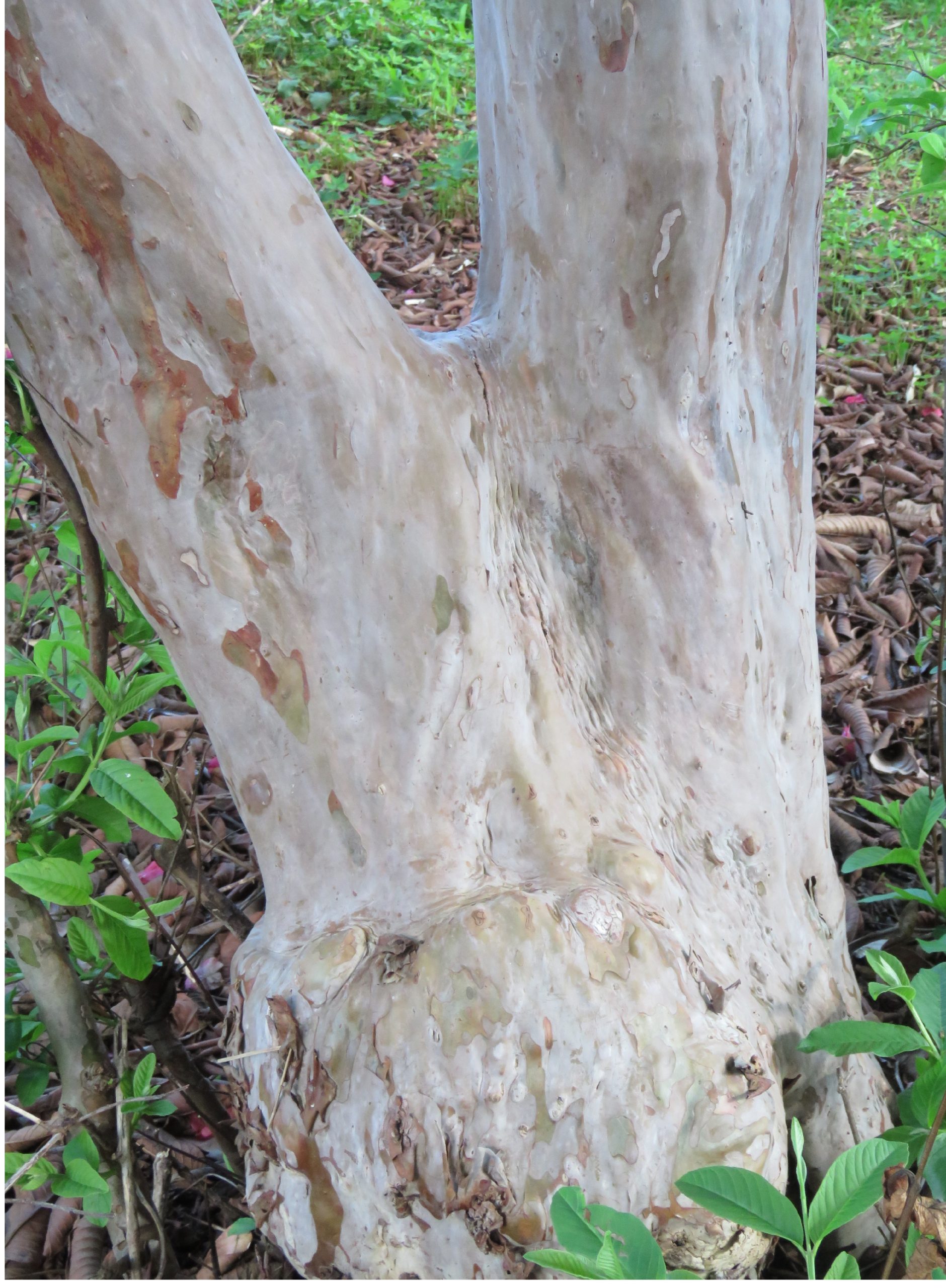
Psidium sp. with beautiful bark Photo by Rob Jarvis
In Nature these decisions are being made all the time by storms, strong winds, invasive fungi and bacteria that infect cracks and wounds and just the trees themselves reaching their ordained lifespan. Sometimes the most surprising candidates bring spark and colour to a garden and on the left we see a common guava, Psidium sp. with beautiful bark.
Below the rampant roots of one of the many trees on the far side of the tennis court have made the surface unplayable. Choose planting sites and trees to grow around and near man made structures with great care!
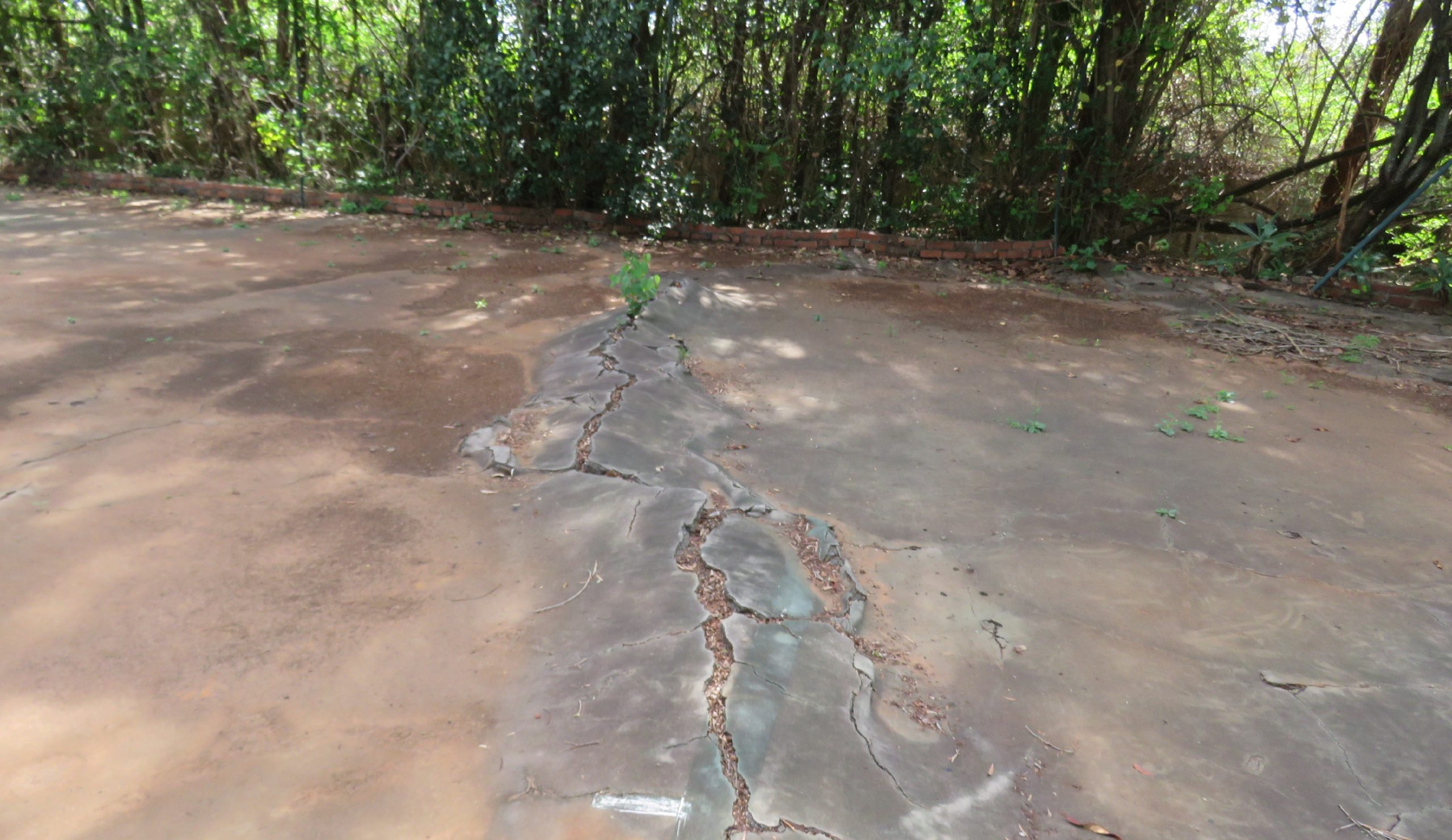
Tree roots in tennis court Photo by Rob Jarvis
A great afternoon with many trees that are clearly thriving and with Lowveld favourites like Baobabs growing alongside fever trees and Faidherbia albida the winter thorn of Mana Pools fame.
TREE SOCIETY WALK IN THE BOTANICAL GARDENS
SATURDAY 6TH NOVEMBER by Ann Sinclair
A good gathering of tree enthusiasts came for the walk. It was a very hot morning and a few dropped out after an hour. As always there was so much to discuss and learn.
We headed towards the Lowveld section, noting the Bauhinia petersiana near the steps with its curling twigs very prominent in its leafless state.
Xeroderris stuhlmannii had just finished flowering, the flowers are rather small white to greenish white in panicles up to 20 x 20 cm. They open at night and are pollinated by moths.
The Baobab on the left is looking very good and is now in full leaf.
Along the front of the toilets are some Syzygium paniculatum the Australian brush cherry.
This tree is widely grown in gardens in Harare. It is evergreen and produces puff ball flowers followed by red berries enjoyed by many birds including the Purple Crested Turaco.
Underneath these a small shrub Vitex trifolia purpurea which has mauve flowers and leaves. Some leaves are simple and others trifoliate.

Afzelia quanzensis flower Photo by Rob Jarvis
Tony then pointed to an old label on a handsome Pod Mahogany, Afzelia quanzensis, in flower which was incorrectly labelled. The flower has one red petal with yellow veining. Inside the thick woody pod are 6 to 10 dark blackish seeds with a scarlet aril enveloping a third of the seed.
We continued past the Kirkia acuminata, a Marula, Sclerocarya birrea. Another Baobab in leaf with a smooth shiny bark. On the left are 3 Baikiaea plurijuga, the Rhodesian teak. To ensure they survived in the gardens Tom Muller imported 3 tons of Kalahari soil from the Lowveld and filled large holes to plant them in. They are lovely trees with sprays of pink blossom in April. The wood is much sort after and has been seriously exploited. On Saturday they had fresh green leaves.
There is a clump of trees in this section including Acacia erioloba, Terminalia spp. Commiphora caerulea, Combretum zeyheri, the large fruited Combretum, in flower. A Guibourtia conjugata the false Mopane, Baphia massaiensis, the Jasmine pea in flower, attractive in white short sprays.
The Manketti tree, Schinziophyton rautanenii which grows on Kalahari sand, the bark is smooth with a tendency to peel. Combretum hereroense, the mouse eared Combretum and very handsome Musasa, Brachystegia spiciformis and a very tall straight Ficus sur.
Round the corner a very sad old Pink Jacaranda with a few flowers. Stereospermum kunthianum, these trees make spectacular garden subjects but can be difficult to rear successfully.
Further on towards the Herbarium a large Ceiba, the Kapok tree and in full flower, Delonix adansonioides which belongs to the same family as the Flamboyant, Delonix regia.
The Potato bush Phyllanthus reticulatus with small fruit and simple leaves. Vangueriopsis lancifolia was in flower.
Thank you Tony for a very pleasant and informative walk.
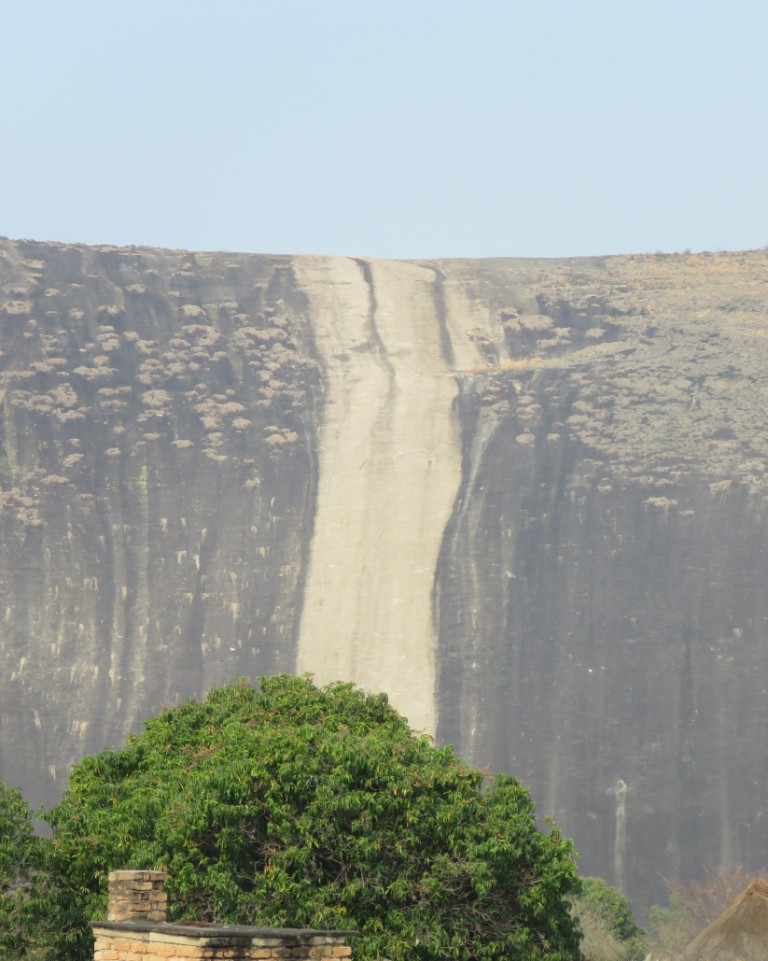
Giant white stripe on rock Photo by Rob Jarvis
Editor’s note does anyone know the cause of this giant white stripe on Domborembudzi Mountain near Juru Growth Point on the Harare/Mutoko road?
Yes you guessed it, it is from the repeated tossing of chopped trees down the cliff from a woodland growing in the hidden valley behind the ridge. Lichens, once stripped from rock, may take decades to recover.
Gleditsia triacanthos
Honey locust tree by Tony Alegria
Fabaceae, subfamily Caesalpinioideae One of about a dozen species.
The first time I went on a tree walk to the Ballantyne Park, we came across several trees which had pinnate leaves and vicious looking compound thorns with long flat brown pods but no one in the group was able to identify these trees.
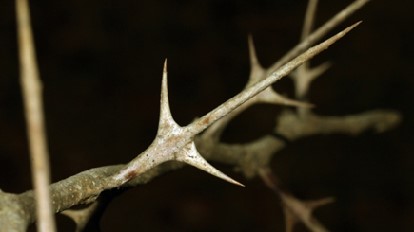
Three-part thorns
Photo by Ian Riddell
The second time I went to the same site, Mark Hyde immediately identified these trees as Gleditsia triacanthos – the Honey Locust tree whose native range is central United States of America. Gleditsia is the Latinized form of the name of Johann Gottlieb Gleditsch, who was a German physician and botanist. Triacanthos means three-parted thorns but as can be seen from the photo they can become compound thorns.

Vicious compound thorns Photo by Tony Alegria
The derivation of the common name below is from: Wikipedia
“The pulp on the inside of the pods is edible and consumed by wildlife and livestock. Despite its name, the honey locust is not a significant honey plant. The name derives from the sweet taste of the legume pulp, which was used for food and traditional medicine by Native American people, and can also be used to make tea. The long pods, which eventually dry and ripen to brown or maroon, are surrounded in a tough, leathery skin that adheres strongly to the pulp within. The pulp—bright green in unripe pods—is strongly sweet, crisp and succulent in ripe pods. Dark brown tannin-rich beans are found in slots within the pulp.”
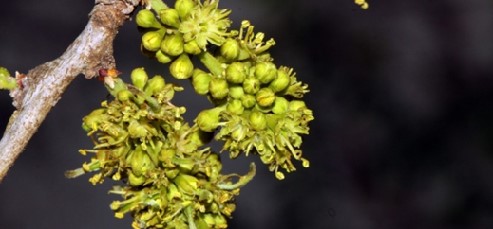
Gleditsia flowers
Photo by Ian Riddell
However, that did not explain the “Locust” part of the name, which came from: Askinglot.com “Etymology. In North America and Greece the term “locust” (Greek. akris) was applied to the pods of the carob tree that somehow resemble the insect. By extension many other pod-carrying trees have been called “locust tree”.
The flowers are green and insignificant but the leaves are most fascinating. Twice pinnate on young trees but become once pinnate once the tree matures. On close inspection, there were both once pinnate and twice pinnate leaves on the same twig and also a weird combination of the two!
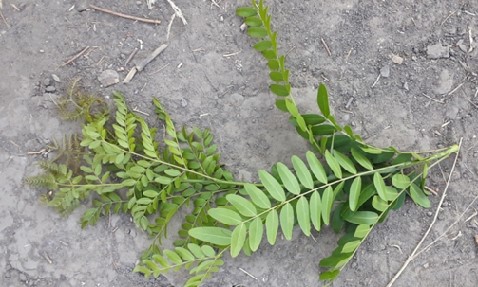
Alternate leaf forms Photos by Tony Alegria
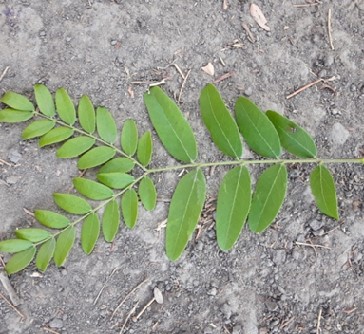
Alternate leaf forms Photos by Tony Alegria
I’ll have to go back there and sample the pods for their sweetness!
More pages on our website by Tony Alegria
I want to add more content to the Tree Society of Zimbabwe web site and now the newly formed WhatsApp Tree Society Zimbabwe group has made this very possible. Essentially we would like any member who sees something interesting on these particular topics to send in material I want to add three different pages to cover:
-
Galls
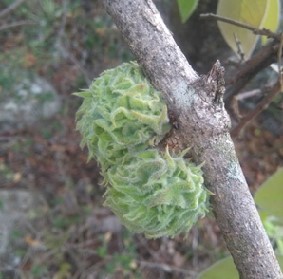
Galls of Combretum molle Photo: Edwicks Chidziva
I have found that certain-shaped galls grow on the same species of tree and sometimes it’s the gall that identifies the tree! I would like to have many, many photos of all types of galls. We may find the same type of gall on different trees and then perhaps not. Only by having many pictures will we be able to see the variety of galls out there and which trees have what.
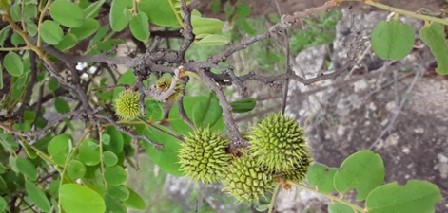
Galls of Dalbergia nitidula Photo: Tony Alegria
For you to contribute to this page, simply take photos of any galls you see and post the photos on the WhattsApp group with the name of the species of the tree the gall was seen on and also the name of the photographer. I will create a new page on the website as soon as I have enough photos to do so. Naturally there will have to be an introduction to galls at the top of the page and also a link to it from FAQ (Frequently Asked Questions).
-
Inflorescences
Flowers come in a variety of shapes and sizes and they also grow in a variety of ways. The diagram below shows some of the arrangements they may come in.
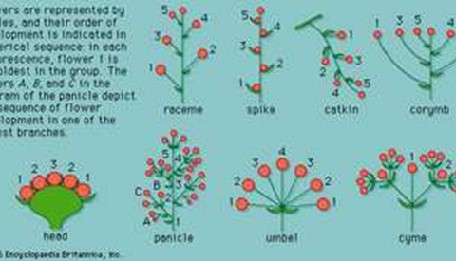
Illustration is from: britannica.com
I want to have many photos showing all the different types of inflorescences. For you to contribute to this page, again simply take photos of any arrangement of flowers you see. One stipulation though, the type of arrangement must be clearly seen. The species of the flower and name of the photographer must also be included – the right photographer needs to be credited.
3. Spectacular and weird trees
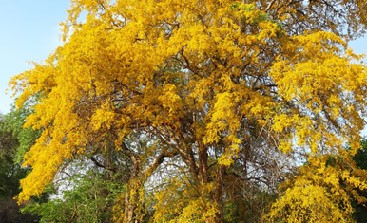
Spectacular tree Photo: Frances Morris
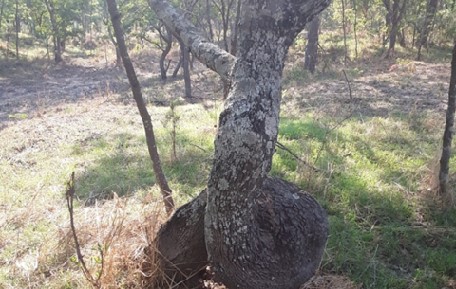
Weird tree Photo: Tony Alegria
The question of course is what constitutes a spectacular tree? Girth, height, shape, spread etc. Many small trees you wouldn’t give a second glance can be really spectacular when in new leaf or when flowering. To start the new page it doesn’t really matter as long as you feel it’s a spectacular or weird tree. In time, better photos may replace some of the original set, but we need to make a start! This page should be special and all trees must be able to be seen by anyone – no trees at the back of private yards! So street trees and garden trees visible from the road are what we are looking for as well as any tree in public gardens/parks or even from some destinations which may only be affordable to some. When it comes to trees in flower or new leaf, we now need to know the date the tree was seen. So the requirements for the page are: visible by anyone; date of flowering/new leaf; description of where it was seen with a GPS reading or a WhatsApp pin (if possible); species of tree and name of photographer. Photos to be posted on the Tree Society Zim WhatsApp group. Above are two examples without all the information required.

City photo by Rob Jarvis
I may be wrong, but photographic proof that Zimbabwe is sliding downhill? Photo Rob Jarvis, Hillside
Historic and Tree Tales by Rob Jarvis
Whilst on the subject of spectacular trees I am sure you are all aware of the wonderful book put together by Lynn Mullin called Historic Trees of Zimbabwe. Really beautifully done and no one who appreciates trees should be without a copy of this book in their homes. However what is happening with these trees today? I know with the passage of time a number have succumbed to old age, the woodcutter’s axe, development and other problems.
It would be great if our members in their wanderings around Zimbabwe, tried to see these trees and record an up to date picture and short text on the state of them. When taking the picture also record a pin using WhatsApp on your phone giving the exact position so that the particular tree and its history can be followed in time, by any one of our members.
Jonathan Waters has also recently produced a book Tree Tales of Zimbabwe mentioned in last month’s newsletter and if we all carry these two publications around with us, do some research before going to actual areas and specific sites and make a point of updating our Society and its members on the status quo of particular trees mentioned therein. Of course if you see other special trees then they can go into the records mentioned and requested by Chairman Tony Alegria above.
I know there are some individuals also recording these sorts of data, presumably with a plan ultimately to reproduce the book(s) commercially at a later date. Our Society should be in a position to provide some information if required to anyone interested.
I don’t know if any of you have collected copies of Thomas Pakenham’s Remarkable Tree series? Certainly we have some and they just make wonderful reading and give us a certain amount of botanical ambition when we travel internationally. Now of course we can only do it by flipping pages in the books, but boy when the skies do open up for us again we are going to be well-prepared for travel! So do what you can in your travels roundabout Zimbabwe and let’s build up a database that can be easily accessed and used by our members going forward, not just for decades, but probably centuries!
And use the WhatsApp platform of the Tree Society. It’s easy!
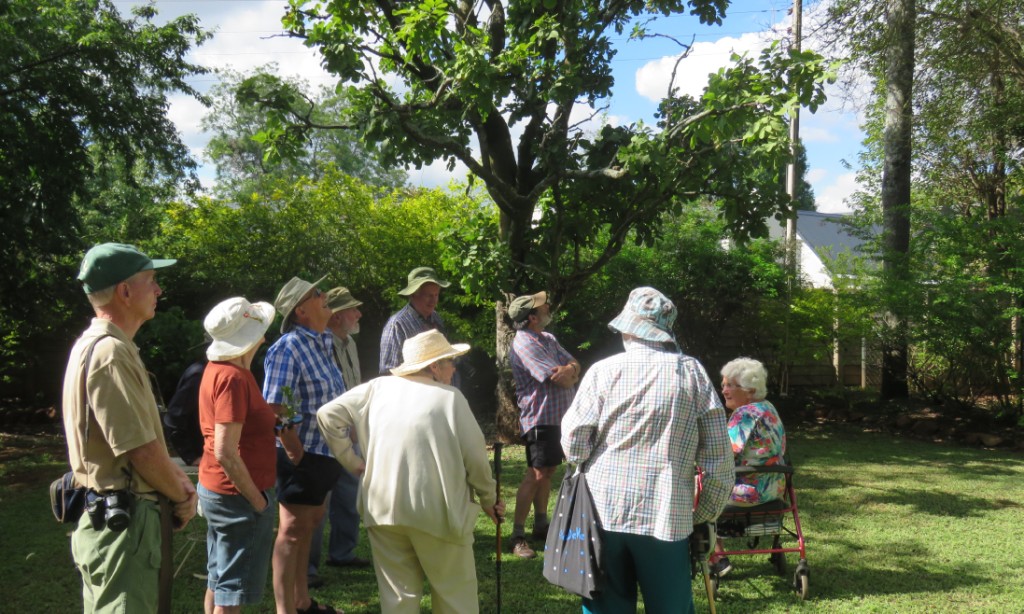
Tree Society members on recent outing Photo by Rob Jarvis
Some very recognisable botanical types at the recent visit to the home of Keith and Jeanette in Borrowdale recently. Long may these people continue to educate and entertain us in pursuit of complete knowledge and sightings of the perfect trees of Harare.
Enjoy the Festive Season and we look forward to meeting up again during January 2022.
Cheers Mafungi
CHAIRMAN – TONY ALEGRIA


